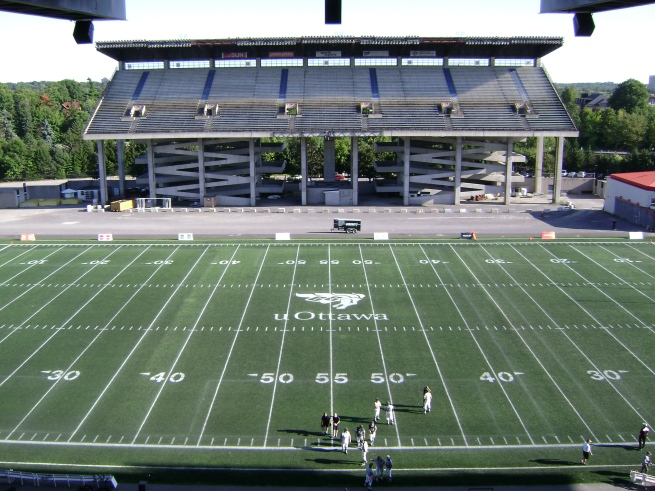Ottawa’s Union Station: it’s a majestic old building, a half-scale replica of New York City’s old Penn Station, and unfortunately underused. Since 1966, when the National Capital Commission removed rail from downtown, the building has been used as a government conference centre, rather than a hub for rail travelers. However, a recent article on CBC News reported that trains may yet return to Union Station, in the form of a station on the new light rail system—taking the place of the Rideau\Sussex station in the proposal.
Certainly as it stands right now, Union Station is a tragically under-appreciated piece of infrastructure. As a government conference centre, the average Ottawan has few opportunities to go inside the structure. As the main hall of a transit station, commuters would be able to use this suddenly re-opened public space on a daily basis.
But in my mind, that’s not all that could be done with the station. I don’t know the interior dimensions of the building, but I would imagine that a transit station would only take up a small portion of the available volume, and other transportation infrastructure (commuter rail, and intercity bus and rail) probably won’t be able to serve the location, meaning no space would need to be set aside for them. So with that in mind, what could be done? One of the things that Ottawa lacks is a real civic place, one to celebrate Ottawa itself. Over the years as a national capital, the federal government has eclipsed the city, and it’s only been in the last few decades that we’ve really begun to find our identity as a municipality instead of as a capital.
So why not this: in our hypothetical, future train station, you walk in the front doors to a lobby, with transit facilities to one side, and perhaps benches and chairs with the odd cafe or two along the edges of the area. Taking up the rest of the space inside could be a City of Ottawa museum, celebrating our history, from rough logging town to major Canadian metropolis. It could even include artifacts that tie in with the location, like the old streetcars OC Transpo is slowly attempting to restore. Granted, we do already have the Bytown Museum, but it could still comfortably fill a role as a museum predominantly about the canal, while the Union Station museum could be about the rest of the city.
This, of course, is just a suggestion—a museum is just one option, but the overriding point is that we may have an opportunity to create a fantastic new public space, and the standard option of renting out space for shops and restaurants would be a tragic waste. The simple return of transit, of course, would benefit the building enormously by itself, but I can’t help but feel we could do so much more. These kinds of opportunities only come along once and a while, and I think it’s important to jump on it when and if we can.




Does Terry Fox Drive really need extending?
Tags: development, environment, news and comment, Ottawa politics, proposals, sprawl, suburban vs. urban, the future
As I browsed through the Ottawa Citizen yesterday, I couldn’t help but notice this article, on the extension of Kanata’s Terry Fox Drive being fast-tracked despite a number of environmental concerns. I instantly knew I had to look it up and attempt to understand why it’s so important this particular project has to be pushed through and I came away baffled.
Helpfully, the extension already seems to be marked on Google Maps, so it was easy to get an idea for what the new roadway would look like. As described in the article, it will arc through forest, marsh, and farmland as it makes it’s way from the neighborhood of Kanata Lakes to Morgan’s Grant. And so far as I can tell, it will serve no useful purpose besides creating sprawl and potentially destroying a rare habitat. Not good, to say the least.
The endangered Blanding's Turtle, which can be found in marshland west of Kanata. Image from Canadian Wildlife Service, by Ryan M. Bolton.
I think what we have here is a case of the Greenbelt doing more harm than good for the environment. While I’d rather see the urban boundries of Ottawa’s suburbs frozen where they are for the time being, for growth to be concentrated inwards, it would seem to me that if Kanata has to expand, there are far more suitable areas to the east. There’s a lot of farmland out there, especially north of the 417, land that is for some reason protected, while the land to the west is not. While I hardly advocate paving over farmland for suburbia, it can’t be denied that there is a lot more of it around Ottawa compared to rare turtle habitats.
What strikes me about this is that we seem to have some very screwed-up priorities here. Is it really this important to build a shiny, four-lane monument to urban sprawl? Surely there must be some other piece of infrastructure that this stimulus money can be spent on—something that won’t harm an endangered species. That’d be something I could go for.